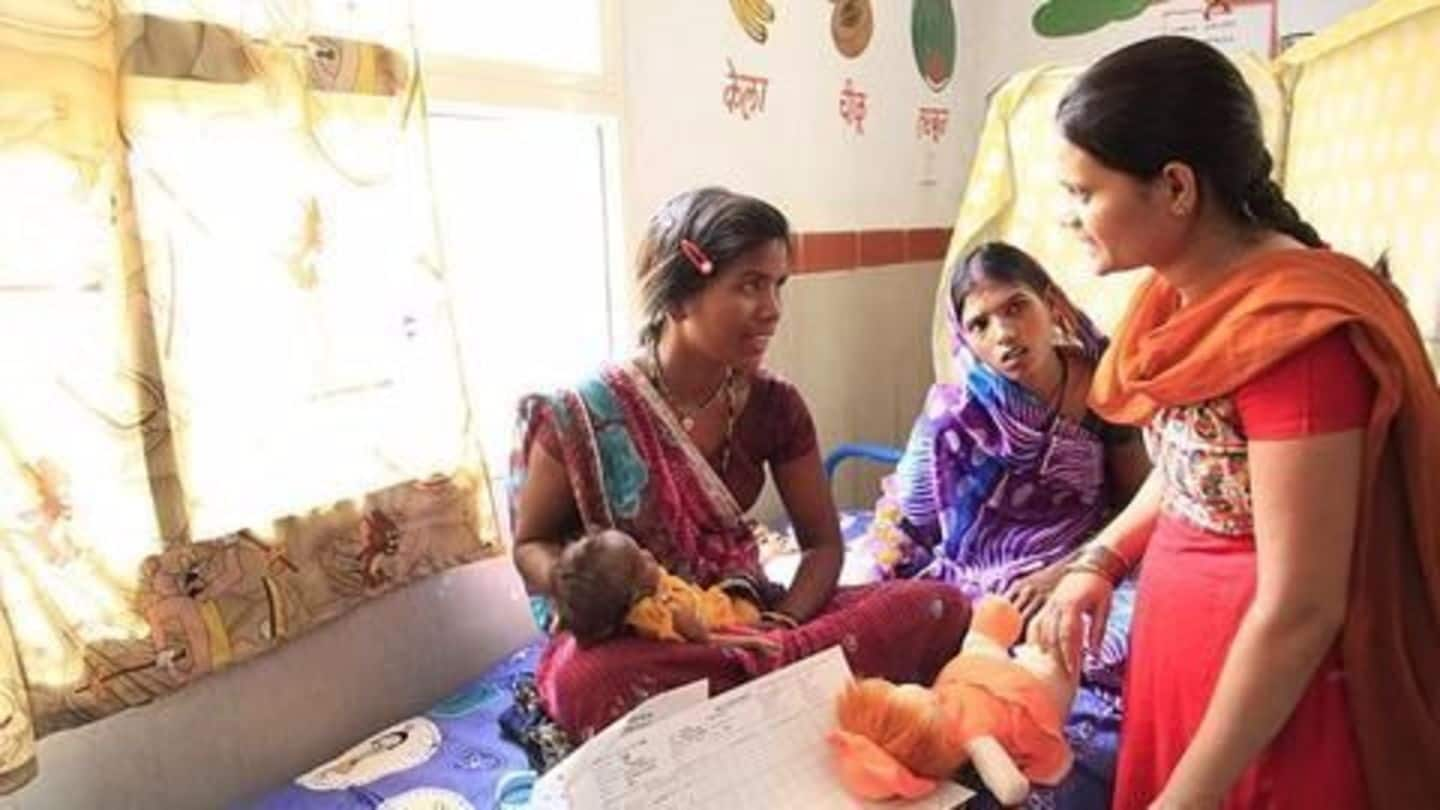
Assam has India's highest maternal deaths, text messages save lives
What's the story
Assam has a maternal mortality ratio of 300 deaths per 100,000 live-births, the worst in India and almost the same as Ghana (321) and Sudan (325).
However, a non-profit project called End Maternal Mortality Now (EndMMNow) is using text-messages in Assam's Sonitpur district to ensure expecting mothers gain access to free and safe government health facilities, helping save their lives.
Here is IndiaSpend's report.
Definition
What is maternal death?
According to the World Health Organization, a "maternal death is the death of a woman while pregnant or within 42 days of termination of pregnancy" which could be caused by complications during pregnancy and childbirth. MMR indicates the quality of a health care system.
High MMR explained
29% of childbirths in Assam don't take place in hospitals
Assam's MMR of 300 is nearly twice that of India's average (167), according to Ministry of Health and Family Welfare data.
This could be because several childbirths in Assam don't take place within healthcare centres but at homes.
Around 29% of babies in Assam aren't born in healthcare institutions. The national average is 21%, according to the National Family Health Survey, 2015-16 (NFHS-4).
Quote
What happens when pregnant women visit CHCs
"The wards are dirty. Women are sometimes also referred to another hospital, which means more travel. They are made to pay for blood transfusions and medicines, and often also harassed and discriminated against by the staff," said Arpana Choudhury, justice programme associate with NGO Nazdeek.
No blood bank
Community health centres fail Assam's poor women
Sontoshini reported that the CHC in Dhekiajuli, which tends to pregnant women from 236 villages and 21 tea gardens, has been functioning without a blood bank.
"The beds in the ward were covered with torn mattresses, and some were occupied by two women," she wrote.
"There was no doctor in sight, and the nurses sat chatting in a room nearby," she added.
How it works-1
How text messages helped women get better medical facilities
The End Maternal Mortality Now (EndMMNow) project trains volunteers from local communities in Assam's Sonitpur district to become paralegal coordinators.
The paralegals reach out to mothers to inform them about their rights and entitlements and to report government officials who deny them access to free services.
Paralegals report any violations or grievance to EndMMNow by text message and is synced on the project's website.
How it works-2
NGO use text message grievances to inform officials, make change
The text message is mapped on project's interactive website and verified through a fact-finding investigation.
This is then presented to local official responsible for implementing the National Health Mission (NHM) during community grievance forums and solutions are discussed.
NGO officials also present the deputy commissioner of Sonitpur district with reports of violations and make recommendations.
Besides this, the paralegals also educate mothers about nutrition.
Information
230 violations reported through text messages over 2 years
Since 2014, paralegals have reported over 230 violations through text messages under the EndMMNow project. Of these, 91 pertain to payment demands for free medical services, including blood tests, transfusions and medicines. 82 complaints are about denial of entitlements such as take-home rations.
Positive changes
Success story: Women receive entitlements, access to ultrasound
The text messages sent by paralegals have translated to positive changes over the past two years.
As many as 527 anganwadi centres (courtyard shelters) in the Sonitpur region have provided a steady supply of rations to 27,000 pregnant and lactating women, and children.
The Dhekiajuli CHC now has a doctor trained to use an ultrasound machine.
Complaints of expensive medical prescriptions have now stopped.
Information
Project expands to Delhi
Following its success in Assam's Sonitpur district, the EndMMNow project got expanded to Delhi in the form of 'SMS for Justice'. Since its launch in December 2016, over 200 violations have been reported in Bhim Nagar slum in Nangloi, West Delhi.